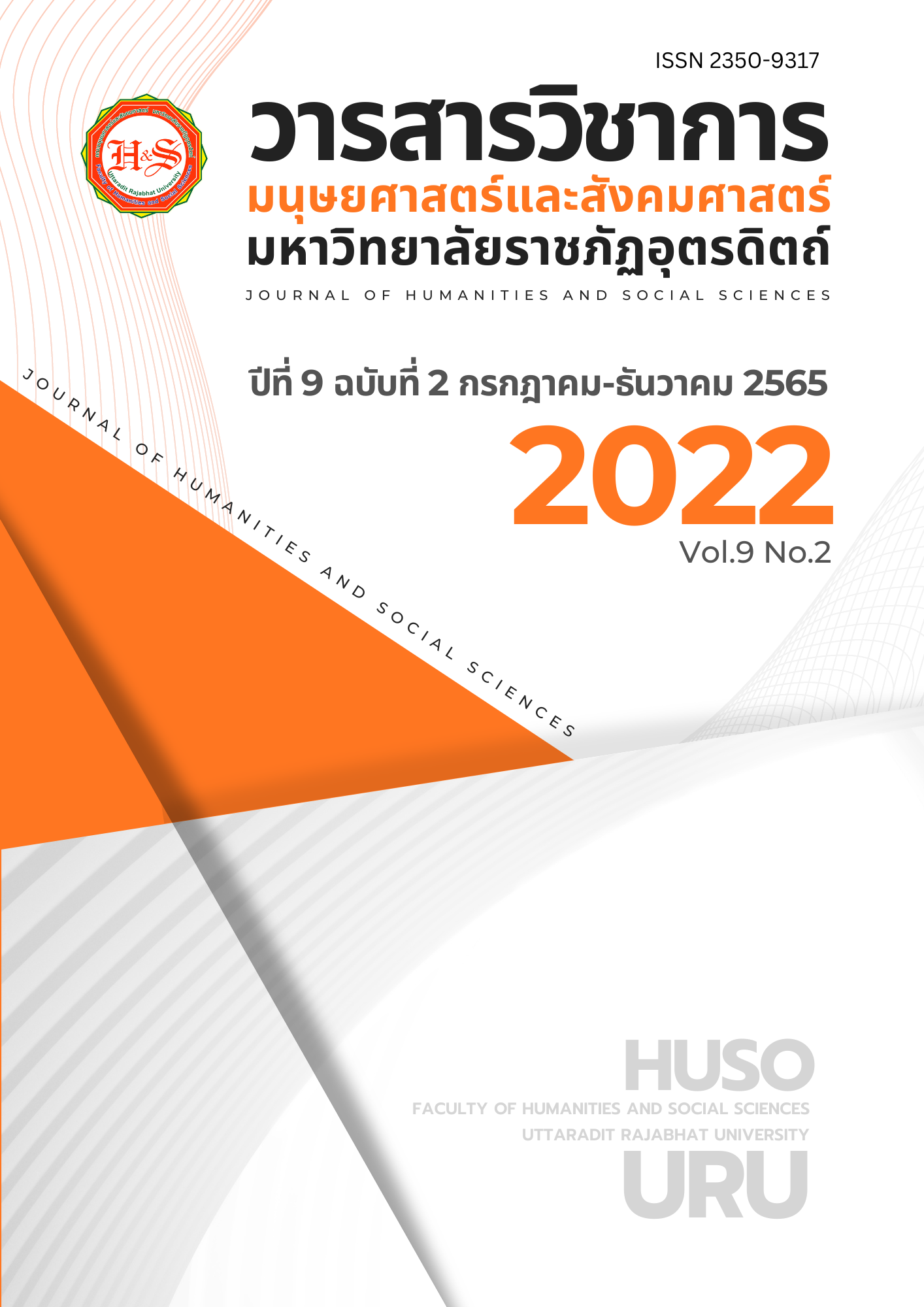Napat The first song practice to study.Thaiclassicial Music Percussion Instrument, should know Satukarn Song
Keywords:
Satukarn SongAbstract
This article discusses the importance of Sathu Karn songs in various contexts in the culture of learning Thai music and rituals in the part of Pi-phat. To know the roles, duties and importance of the reverend songs used for ceremonies and patterns in learning Thai percussion instruments
This article discusses the sacred song. In terms of the principles of the theory in order to understand the role and function of the reverend song. Due to learning Thai percussion instruments in the past, most of them focused on the practical aspect rather than the theoretical aspect. As a result, the understanding of the history of the song and the role and function of the sacred song is incomplete. To add content to know the history of the song Santhukan Including the various contexts of the song Sathu, making it possible to understand how to learn Thai percussion successfully. and understand the role and importance of the sacred song will result in learning the melody of the sacred song, including the role and function of the sacred song in various aspects to achieve better results, the role, duty and importance of the sacred song The first role is to play in the ritual to invite the Three Jewels and the great gods in the heavens. The name of the song "Santhu" appears as the number one song. in the morning overture song Cold prelude music and the prelude to the sermon Shows the great importance of the reverend song. The second role is the Sathukan song as a model for learning how to practice Thai percussion instruments. To be a good foundation to continue learning other musical instruments and to develop practical skills to advance. To continue studying the song Na Phat at a higher level
In summary, the salute is a song that is of great importance. for performing rituals and templates for practicing Thai percussion
To be a model song for learning Thai percussion correctly and to know the different contexts of the Sathukarn song including the history of the reverend songs and the melody of the reverend songs resulting in greater achievements in learning the blessed song It is the great importance of the reverend song as a role. of performing rituals and as a role of being a model song in the study of learning traditional Thai percussion instruments.
References
ชัชชัย พวกดี. (2553). ระนาดเอก. คณะมนุษยศาสตร์และสังคมศาสตร์ : มหาวิทยาลัยราชภัฎกำแพงเพชร.
เดชน์ คงอิ่ม. (2546). เอกสารประกอบการสอนรายวิชาปฏิบัติเครื่องตีไทย 3 : สถาบันราชภัฎบ้านสมเด็จเจ้าพระยา
นิติ เอมโอด. (2562). ตะโพนคุณค่าแห่งมรดกภูมิปัญญาไทย. พิษณุโลก : สำนักพิมพ์พิษณุโลกดอทคอม.
ปัญญา รุ่งเรือง. (2552). ดนตรีพิธีกรรมการประชุมวิชาการครบรอบ 75 ปี มหาวิทยาลัยธรรมศาสตร์และงานดนตรีไทยอุดมศึกษาครั้งที่ 37 กรุงเทพ : เท็ดโปรโมซั่นแอนด์แอดเวอร์ไทซิ่ง จำกัด.
ปิ๊บ คงลายทอง. (2552). ดนตรีพิธีกรรม การประชุมวิชาการครบรอบ 75 ปี มหาวิทยาลัยธรรมศาสตร์ และงานดนตรีไทยอุดมศึกษาครั้งที่ 37 กรุงเทพฯ : เท็ดโปรโมซั่นแอนด์แอดเวอร์ไทซิ่ง จำกัด.
พินิจ ฉายสุวรรณ. (2560). พินิจชีวิต. อนุสรณ์ในงานพระราชทานเพลิงศพ นายพินิจ ฉายสุวรรณศิลปินแห่งชาติสาขาศิลปะการแสดงดนตรีไทย ณ เมรุวัดเสนาสวารามราชวรวิหาร 4 พฤศจิกายน 2560.พระนครศรีอยุธยา: หจก.กาลเวลาบางกรวยนนทบุรี
มนตรี ตราโมท. (2545). คำบรรยายวิชาดุริยางคศาสตร์ไทย. กรุงเทพ : กรมศิลปากร.
สงัด ภูขาทอง. (2532). การดนตรีไทยและทางเข้าสู่ดนตรีไทย. กรุงเทพมหานคร : เรือนแก้วการพิมพ์
สาธุการพิธีกรรมไหว้ครูดนตรีไทย. (2541). งานทำนุบำรุงศิลปวัฒนธรรมส่วนกิจการนักศึกษา มหาวิทยาลัยเทคโนโลยีเทคโนสุรนารี : โรงพิมพ์ปิ่นเกล้าการพิมพ์
อนุลักษณ์ อาสาสู้. ความหมายและความสำคัญของเพลงสาธุการ. สัมภาษณ์. 7 สิงหาคม 2565.
Downloads
Published
How to Cite
Issue
Section
License
Copyright (c) 2022 Journal of Humanities and Social Sciences Uttaradit Rajabhat University

This work is licensed under a Creative Commons Attribution-NonCommercial-NoDerivatives 4.0 International License.
บทความเป็นลิขสิทธิของคณะมส. มรภ อต.



